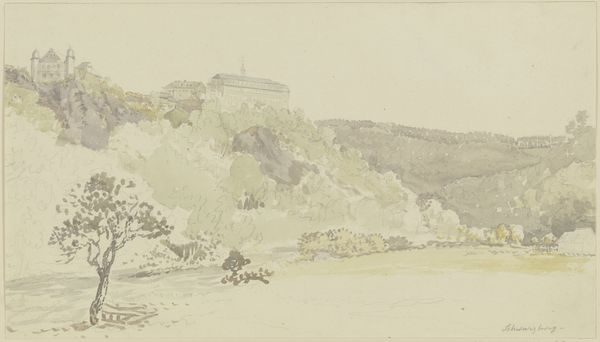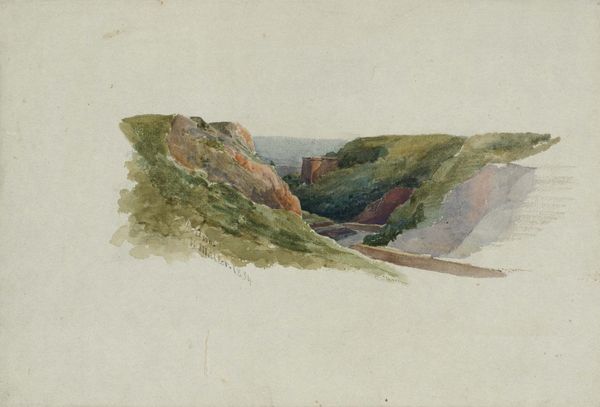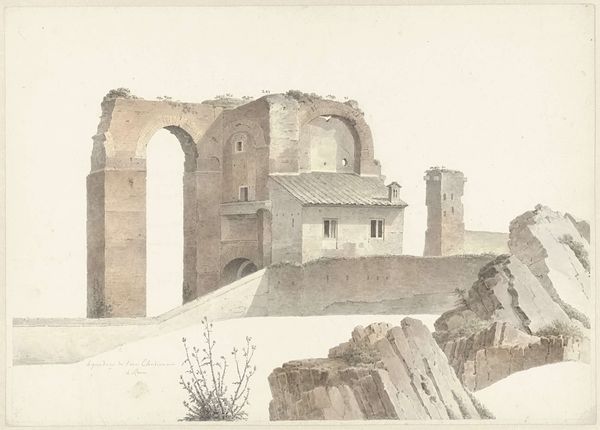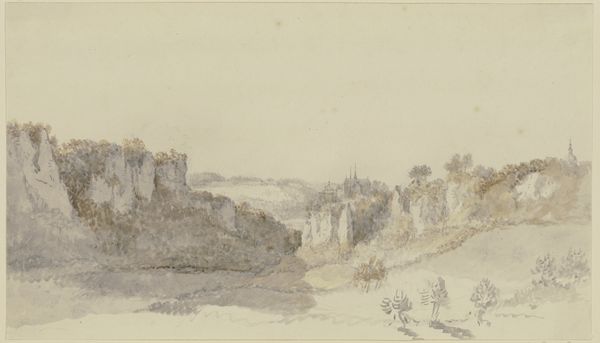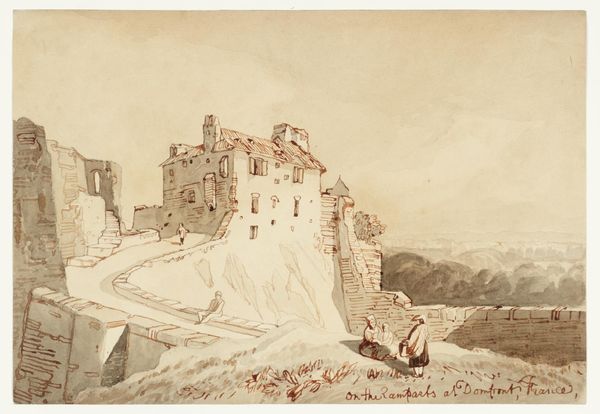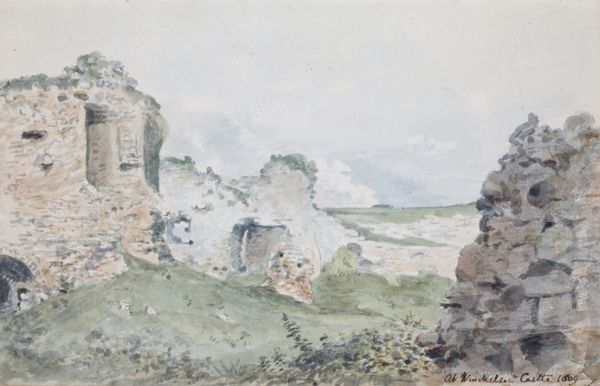
watercolor
#
neoclacissism
#
landscape
#
charcoal drawing
#
watercolor
#
cityscape
#
watercolor
Dimensions: height 352 mm, width 503 mm
Copyright: Rijks Museum: Open Domain
Curator: Look at this interesting work by Henry Swinburne, "Landscape near Vietri," likely rendered sometime between 1753 and 1803, with watercolors. It offers a detailed Neoclassical scene. What catches your eye initially? Editor: The overwhelming feeling is one of serene austerity. The subdued color palette creates a somber, almost mournful mood, despite depicting an outdoor cityscape. The starkness of the central architectural structure set against the faint backdrop and diluted watercolor strikes me. Curator: Vietri, a town steeped in history on the Amalfi Coast, presents a unique juxtaposition. You have the architectural structure dominating, but also an inherent tie to ancient maritime trade routes, possibly resonating with themes of power, isolation and protection through landscape. Editor: The composition's linear perspective does skillfully guide the eye towards the building, its structural elements highlighted using the play of light and shadow. It’s this subtle manipulation that draws you into its massive, imposing presence in an orderly yet almost barren landscape. Curator: Precisely. Notice how the landscape is presented in comparison to the fortress like construction, where nature appears almost muted under its enduring dominance, suggesting not just a physical space, but also a reflection of societal structures of that time. Perhaps this contrast offers insights into the relationship between humanity and the natural world. Editor: True, and although the artist seems more focused on accurately portraying form and light than conveying any personal expression of passion. However, there’s still an evocative nature in the simple use of color and line to describe depth and scale, something almost philosophical about its architectural being in nature. Curator: I concur, an artful dance of both historical preservation, an engagement with societal narrative of permanence with watercolors. It prompts me to ponder: What has it endured since its conceptual rendering? Editor: From my angle, beyond just historical record-keeping, the artistic choices really echo the essence of neoclassical control married with quietude, inviting contemplation on history through its visual language.
Comments
No comments
Be the first to comment and join the conversation on the ultimate creative platform.
